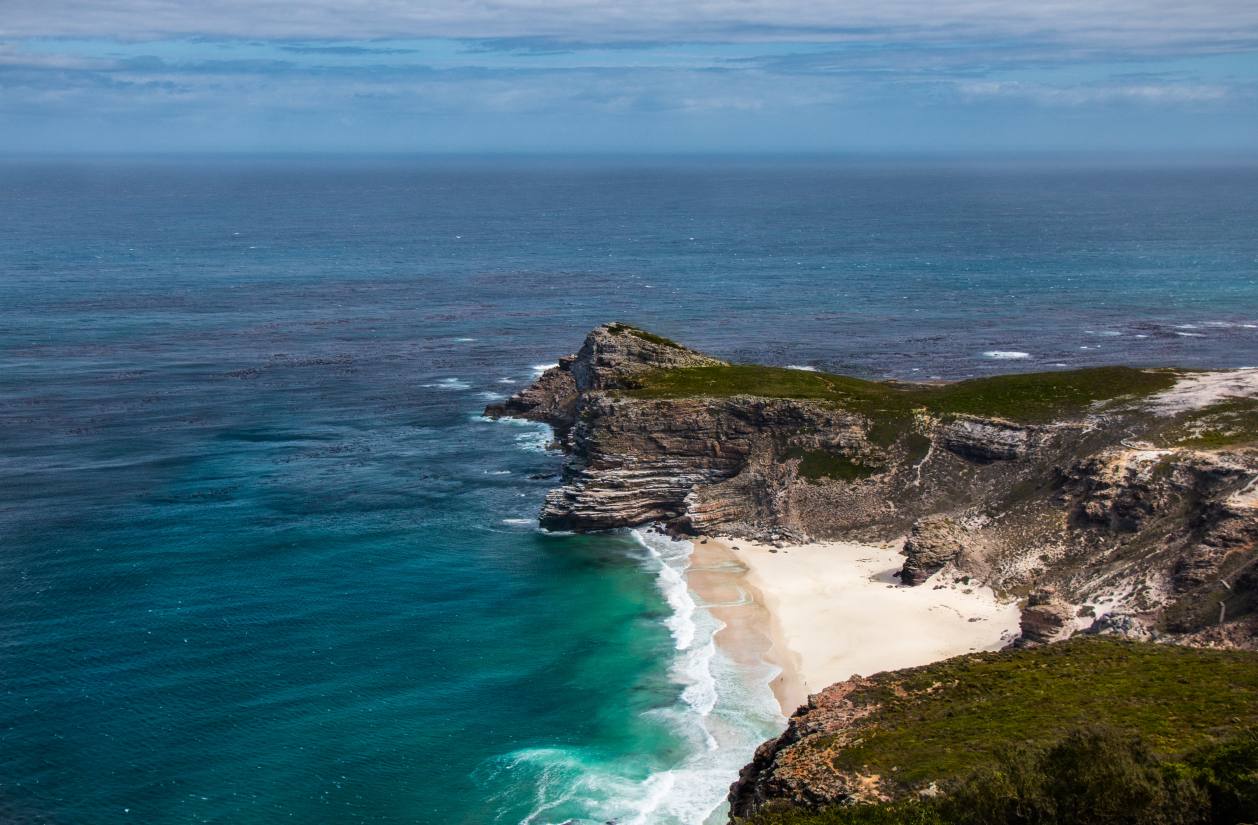settings
Gulliver’s Travels vocabulary
21 places mentioned
help & settings
[x]
-
Cape of Good Hope
-
► definition
Definition: Photo by Victor Smits, CC0, https://unsplash.com/photos/CjR4_rgF91ga rocky headland on the Atlantic coast of the Cape Peninsula in South Africa.A common misconception is that the Cape of Good Hope is the southern tip of Africa. This misconception was based on the misbelief that the Cape was the dividing point between the Atlantic and Indian Oceans. Contemporary geographic knowledge instead states the southernmost point of Africa is Cape Agulhas about 150 kilometres (90 mi) to the east-southeast. The currents of the two oceans meet at the point where the warm-water Agulhas current meets the cold-water Benguela current and turns back on itself. That oceanic meeting point fluctuates between Cape Agulhas and Cape Point (about 1.2 kilometres (0.75 mi) east of the Cape of Good Hope).When following the western side of the African coastline from the equator, however, the Cape of Good Hope marks the point where a ship begins to travel more eastward than southward. Thus, the first modern rounding of the cape in 1488 by Portuguese explorer Bartolomeu Dias was a milestone in the attempts by the Portuguese to establish direct trade relations with the Far East (although Herodotus mentioned a claim that the Phoenicians had done so far earlier). Dias called the cape Cabo das Tormentas ("Cape of Storms"; Dutch: Stormkaap), which was the original name of the "Cape of Good Hope"text from Wikipedia, licensed under Creative Commons - Attribution - Sharealike, https://creativecommons.org/licenses/by-sa/3.0/
Photo by Victor Smits, CC0, https://unsplash.com/photos/CjR4_rgF91ga rocky headland on the Atlantic coast of the Cape Peninsula in South Africa.A common misconception is that the Cape of Good Hope is the southern tip of Africa. This misconception was based on the misbelief that the Cape was the dividing point between the Atlantic and Indian Oceans. Contemporary geographic knowledge instead states the southernmost point of Africa is Cape Agulhas about 150 kilometres (90 mi) to the east-southeast. The currents of the two oceans meet at the point where the warm-water Agulhas current meets the cold-water Benguela current and turns back on itself. That oceanic meeting point fluctuates between Cape Agulhas and Cape Point (about 1.2 kilometres (0.75 mi) east of the Cape of Good Hope).When following the western side of the African coastline from the equator, however, the Cape of Good Hope marks the point where a ship begins to travel more eastward than southward. Thus, the first modern rounding of the cape in 1488 by Portuguese explorer Bartolomeu Dias was a milestone in the attempts by the Portuguese to establish direct trade relations with the Far East (although Herodotus mentioned a claim that the Phoenicians had done so far earlier). Dias called the cape Cabo das Tormentas ("Cape of Storms"; Dutch: Stormkaap), which was the original name of the "Cape of Good Hope"text from Wikipedia, licensed under Creative Commons - Attribution - Sharealike, https://creativecommons.org/licenses/by-sa/3.0/ map: by OpenStreetMap®, licensed under the Creative Commons Attribution-ShareAlike 2.0 license
map: by OpenStreetMap®, licensed under the Creative Commons Attribution-ShareAlike 2.0 license
► uses
Uses:
We had a very prosperous gale, till we arrived at the Cape of Good Hope, where we landed for fresh water; but discovering a leak, we unshipped our goods and wintered there;
Jonathan Swift. Gulliver's Travels Into Several Remote Regions of the World (1726)
---
Rum: Truth is, I don't know the way to the Cape of Good Hope anyway.
Blackadder: Well, what were you going to do?
Rum: Oh, what I usually do. Sail 'round and 'round the Isle of Wight 'til everyone gets dizzy. Then head for home.
BBC. Blackadder, season 2: Potato

